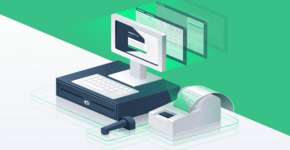How to Explain IoT App Development to Your Clients
Today we will talk about something different, something really interesting and fascinating. No, we aren’t going to reveal the secret of immortality. We will guide you into the mystery world of opening by themselves doors, fridges giving information on what to buy, and many other weird things from the future.
In this article, we will explain, how an idea from the world of the Internet of things turns into a working prototype, which, in turn, becomes a full-fledged product, suitable for use in real life.
Everything you would like to know about IoT but was too shy to ask
Ideally, the Internet of things is an environment in which almost everything connected to the Network can represent even the slightest interest for the one who uses “things”. This interest can be expressed in the ability to “control” a thing and to recognize its condition. And, you can do it anywhere and anytime.
By its nature development for IoT is an endless innovation and a lot of completely different projects that add intelligence to an incredible number of “things”: from arranged very simple to complex systems; from the usual to everyone, to the completely exotic.
Nevertheless, despite such diversity, each project, one way or another, is created taking into account the experience, accumulated by the IoT-industry. Experience and practice make it possible to identify common elements in the creation of different IoT projects.
Phase # 1 (Gathering the information)
The first step in creating an IoT product is to identify the existing problem that this product will solve, or the potential opportunity in the market, an empty niche that can be filled.
The documentation of this stage should describe the problem, the value of the solution (both for the end-user and for organizations, which will be engaged in production and implementation), as well as a description of the limitations of the concept. The documentation should also contain information about the alleged difficulties and limitations of the project implementation process.
See More Top 10+ IoT App Solution Providers Companies
See More IoT Technology will Change the Future of Marketing
Phase # 2 (Designing the model)
Here it’s required to design a model to test the concept, which will show whether the product is able to solve the task assigned to it. The original project should describe the practical approach to creating the product, including hardware, software and network elements.
In this case, it is necessary to take into account all possible difficulties and constraints in the project implementation, identified at the first stage of the work. At the same time, since there is no physical implementation of the system yet, one must take into account that part of the bottlenecks of the solution can be seen only on the working prototype. At the same stage, attention should be paid to such factors, as the cost and security level of the solution.
Phase # 3 (Finalizing the layout)
At this stage, the developer needs to create and finalize the layout for testing the working capacity of the idea. This physical prototype is based on decisions taken in the second phase. If necessary, changes are made to the project at this stage, which is also documented. Changes, based on the identified shortcomings and additional opportunities as a result of testing, it is also necessary to document.
Phase # 4 (Stabilizing the beta)
At this stage, it will be crucial to create a stable beta version. After it was proved that the project is able to effectively solve the task assigned to it, it can be decided that it would go into mass production. Here comes a version of the project focused on the finished product.
Phase # 5 (Rigorous testing)
Here the developer needs to evaluate the capabilities of the product and expand its functionality. The finished beta version is tested for correct operation in accordance with the specified parameters.
During the testing, the development team also identifies additional features and product functions that are introduced into it in order to make it more reliable, to increase its value for end-users.
Phase # 6 (Publishing & Promotion)
In the final, the project is finalized and goes to the publishing stage. As soon as it is decided, that the product has all the necessary capabilities, the team improves it, expanding its management capabilities, security indicators, optimizing the model for marketing and production efficiency reasons. Also, at this stage, the user interface is completed. The tasks to be performed in this phase includes the final planning of ways to promote and sell the product before moving to full-scale production.
Conclusion
The structured approach, which we described, makes it possible to turn ideas into ready-made solutions for mass consumption. One of the most important advantages of the presented methodology is the speed of creating working prototypes based on low-cost and available components. This limits the risks and gives the development team the freedom to implement innovations.
We hope our story will help you transfer your IoT ideas into reality.





